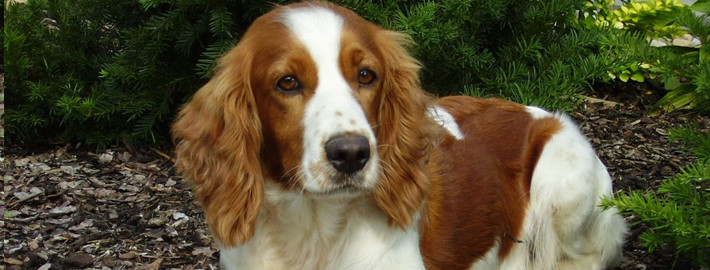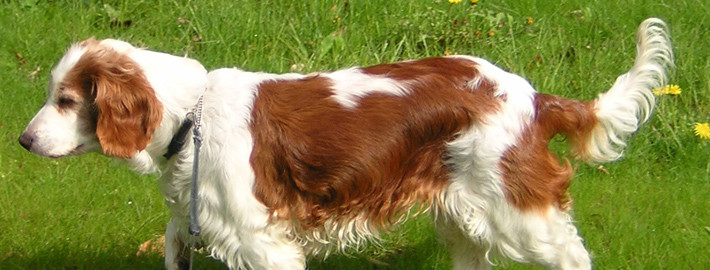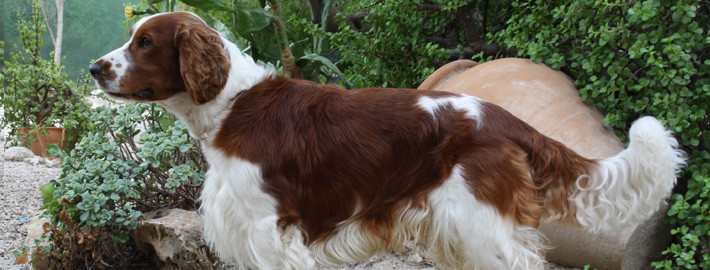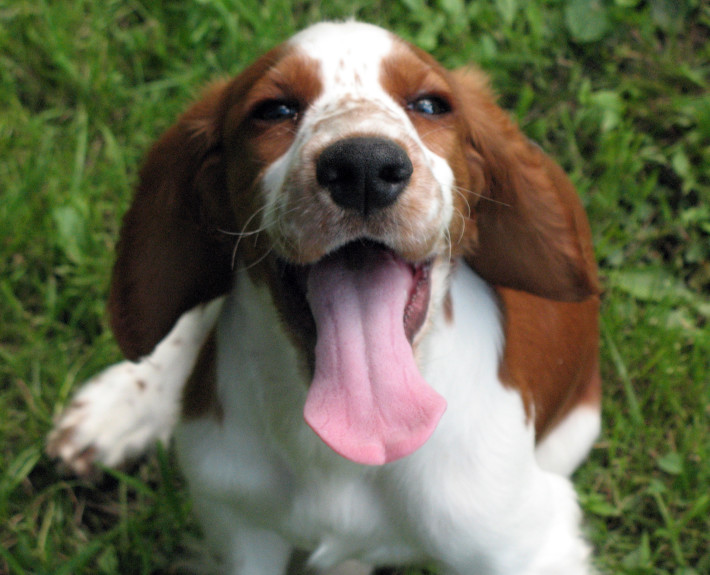What makes the Welsh Springer Spaniel Unique?
Although they are a reasonably active breed indoors, Welsh Springer Spaniels are suitable for both apartment life and more rural settings. These dogs are not especially common but they are nonetheless great with small children.
Page Contents
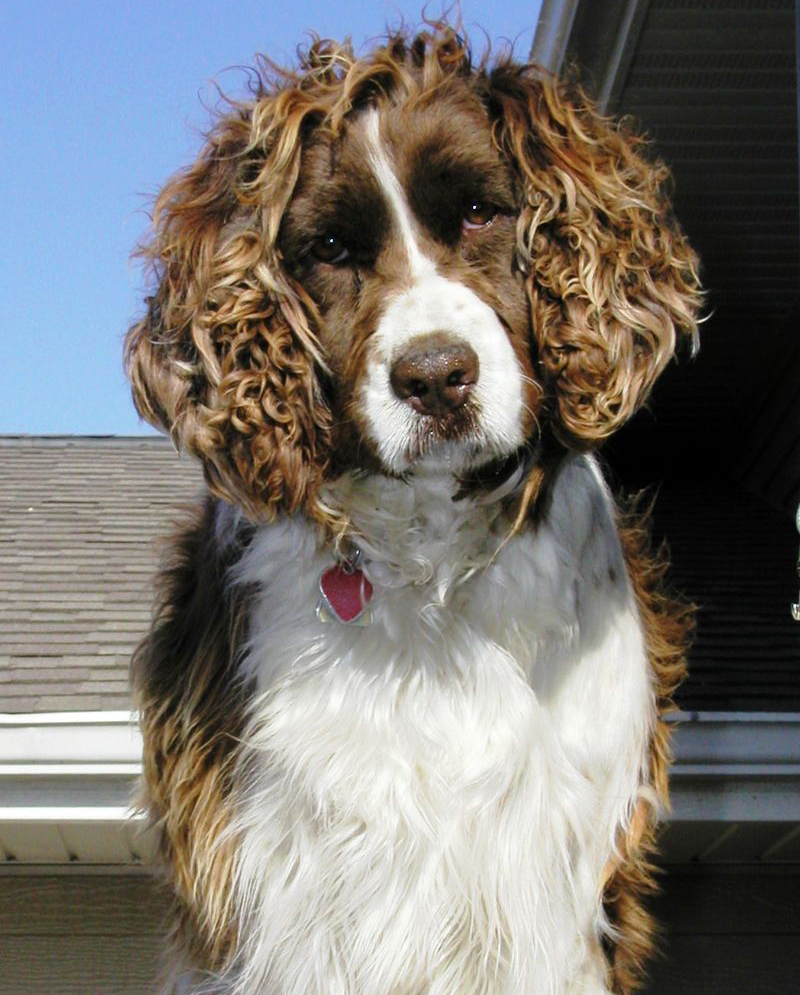
SnapShot
| Size: | Males – 18-19 inches (46 to 48 cm) Females – 17-18 inches (43 to 46 cm) |
| Weight: | Males – 35 to 45 lb (16 to 20 kg) Females – Females – 35 to 45 lb (16 to 20 kg) |
| Origin: | Wales |
| Life Span: | 12 – 15 years |
| Colour: | Black and White, Chocolate and White, Red and White (Yellow and White), Blue and White (Slate), Lilac and White, Sable and White, TriColor, Saddle Pattern, Blue Merle, Red Merle, Sable Merle |
| Litter Size: | 4-8 puppies with the average being 6 puppies |
Is the Welsh Springer Spaniel Right For You?
Members of this breed are sensitive individuals that require patient handling over the course of their training. They respond best to rewards based instruction and gentle verbal correction. Lessons should be kept short because the dogs have a short attention span. Welsh Springer Spaniels can be stubborn at times and will need consistent rules and a firm hand to keep them from assuming leadership of the household. Rewards based training works well for members of this breed.
They should still be supervised around toddlers who are unsteady on their feet to keep problems from occurring. Welsh Springer Spaniels also get along well with other pets too if they are raised around them.
In 5 Words
- Alert
- Docile
- Friendly
- Responsive
- Courgeuos
Characteristics
Description
General Description
Welsh Springer Spaniels are medium-sized hunting dogs with athletic appearances and a level back. Rounded heads, square muzzles and long, fringed ears are features of this breed. Black or brown noses are commonly found on these dogs. A keen sense of smell is another breed characteristic. There is typically a soft expression in medium to dark brown eyes and their coats are typically a combination of red and white fur. Welsh Springer Spaniels also have level or scissor bites. Members of this breed also have webbed feet but nonetheless manage to cover ground quickly. These dogs additionally possess a fringed tail that is carried horizontally. In countries where the practice is not illegal, this appendage may be docked.
Size
Female dogs tend to measure between 17 and 18 inches (43 and 46 centimeters) in height. Their male counterparts are slightly taller at 18 to 19 inches (46 to 48 centimeters) tall. Dogs of both genders typically weigh between 35 and 45 pounds (16 and 20 kilograms).
Coat
Welsh Springer Spaniels have soft fur that is thick enough to make them relatively impervious to debris, water, and inclement weather. These dogs should have straight coats of a medium length, which should not impede them in their duties as a working animal. They should not have fur that is either wavy or wiry. Feathering is present on their ears, tails, chests, legs, and bellies. Coat colors include white with black, chocolate, red, blue, lilac, and sable. Merle dogs are available in blue, red, and sable. Welsh Springer Spaniels may also come in tricolor or have a saddle pattern on their bodies.
Short History of the Welsh Springer Spaniel
As their name implies, this medium-sized sporting dog is native to Wales in the United Kingdoms. However, the Spaniel breed from which they are descended has origins in Spain. Originally all types of spaniels were considered to be one breed, taking their titles from the functions that they performed. These dogs eventually began to be separated into Land and Water Spaniels. The Welsh Springer Spaniels were of the former type.
Artworks dating as far back as the Renaissance show dogs that are similar to this breed. However, this breed was particularly popular during the 1700s as the favorite hunting bred of the aristocracy before it was replaced by other spaniel types. Members of this breed also made an appearance at the first Kennel Club which was held in England in 1873. Welsh Springer Spaniels were eventually admitted to the American Kennel Club in 1914. While people in the States weren’t much interested in these dogs at first, the breed became increasingly more popular after the Second World War got over.
Temperament
Members of this breed are placid and even tempered. They make loyal, contented family pets that stick to their human beings but keep their distance around unfamiliar people. Early socialization is helpful in keeping dogs from becoming overly timid or too protective of their humans. These spaniels are very good with youngsters and enjoy playing with them. Members of this breed are also the perfect size to be playmates for older kids. For the most part, their size helps keep them from being injured and most are small enough that they won’t inadvertently knock over a small child. They should still be supervised around toddlers who are unsteady on their feet to keep problems from occurring. Welsh Springer Spaniels also get along well with other pets too if they are raised around them.
Caring for Your Welsh Springer Spaniel
General Health
Born in litters averaging about 6 puppies each, these dogs tend to live between 12 and 15 years. As is the case with any breed, there are some health conditions that may arise from time to time. Hip dysplasia, glaucoma, entropion, epilepsy, and ear infections were all found to be problematic in this breed.
Care
Daily
These active dogs require about 30 minutes of exercise per day. These dogs enjoy jogging but they also do fine on long walks.
Weekly
To prevent illness and reduce foul breath, it is a good idea to clean a pet’s teeth on a regular basis. Welsh Springer Spaniels will also need to be brushed twice weekly to keep their coats from becoming unkempt. If the dogs go hunting, they should be groomed when they return from the field.
Monthly
Most flea, tick, and heartworm prevention medications should be administered once a month in order to obtain satisfactory results.
Grooming & Bathing
Welsh Springer Spaniels have dirt and water resistant coats. However, they shed modest to large amounts of fur on a regular basis. Owners may need to vacuum their houses frequently as a result.
Due to the prevalence of ear infections in this breed, their ears should be regularly checked for debris and cleansed with a vet approved formula when dirty. Their toenails will also need to be kept trimmed.
Exercise & Training
Members of this breed are sensitive individuals that require patient handling over the course of their training. They respond best to rewards based instruction and gentle verbal correction. Lessons should be kept short because the dogs have a short attention span. Welsh Springer Spaniels can be stubborn at times and will need consistent rules and a firm hand to keep them from assuming leadership of the household. Rewards based training works well for members of this breed.
These dogs need a moderate amount of exercise or they may end up becoming bored and destructive. Welsh Springer Spaniels also benefit from having a yard to run around in. Members of this breed will display a natural hunting instinct that will lead them to retrieve birds without any prompting. Therefore, these dogs should be kept on a leash while getting their daily exercise. It is a good idea to teach these spaniels how to hunt when they are young so that they know how to use their skills without getting into trouble. However, members of this breed have also become proficient in a variety of dog sports.

